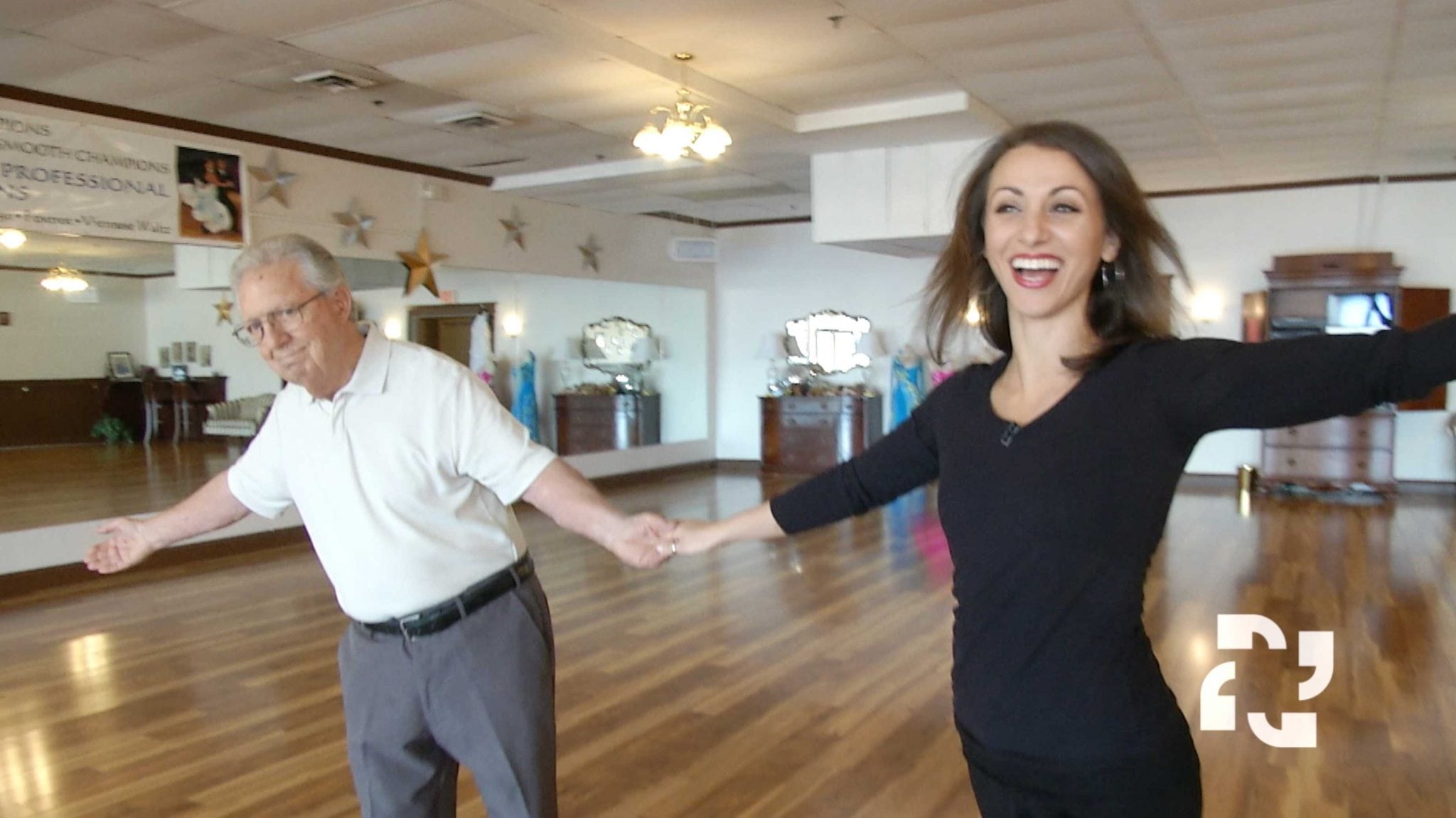<< Back
The Freedom To Dance

April 08, 2018
Armand Dieli and his granddaughter, Christine Kjellquist, share a passion for ballroom dancing. At age 89, he remains a graceful presence on any dance floor. This is particularly true when Christine – a professional ballroom dance instructor – is his partner.
But nearly a decade ago, the Suffield resident noticed some changes. He feet trembled. His balance wasn’t quite right.
Doctors would later diagnose him with Parkinson’s Disease.
Yet he continued to dance. In fact, dancing likely helped his body cope.
“Dancing is a therapeutic modality,” said Dr. Toni de Marcaida, Medical Director of the Chase Family Movement Disorders Center.“Ballroom dancing in particular has been studied in Parkinson’s patients, and has shown very specific benefits for balance, for freezing of gate for initiation of movement.”
“Somehow it frees me from the bonds of freezing and hesitating. It just frees me,” he said. “I can take longer steps without falling over. It definitely helps me.”
For Christine and Armand, dancing is about more than therapy. It’s about re-connecting and sharing those special moments that always seem to shine when they meet on the dance floor.
“The fact that two completely separate people who have completely separate lives can come together and as grandfather and granddaughter that really does make it unique and a special time here together.”
Learn more about the Chase Family Movement Disorders Center here.